Jan Van Eyck About the Art That He Did
Jan van Eyck was a Flemish painter active in Bruges who was born in 1390 and died in 1441. He was one of the innovators of what became known every bit Early on Netherlandish painting, and one of the most meaning representatives of Early Northern Renaissance art. His technical brilliance and formal residue of style served as a model to generations of painters both North and Southward of the Alps.
Ready to learn more than about him?
1. In that location is a rumor that he invented oil painting
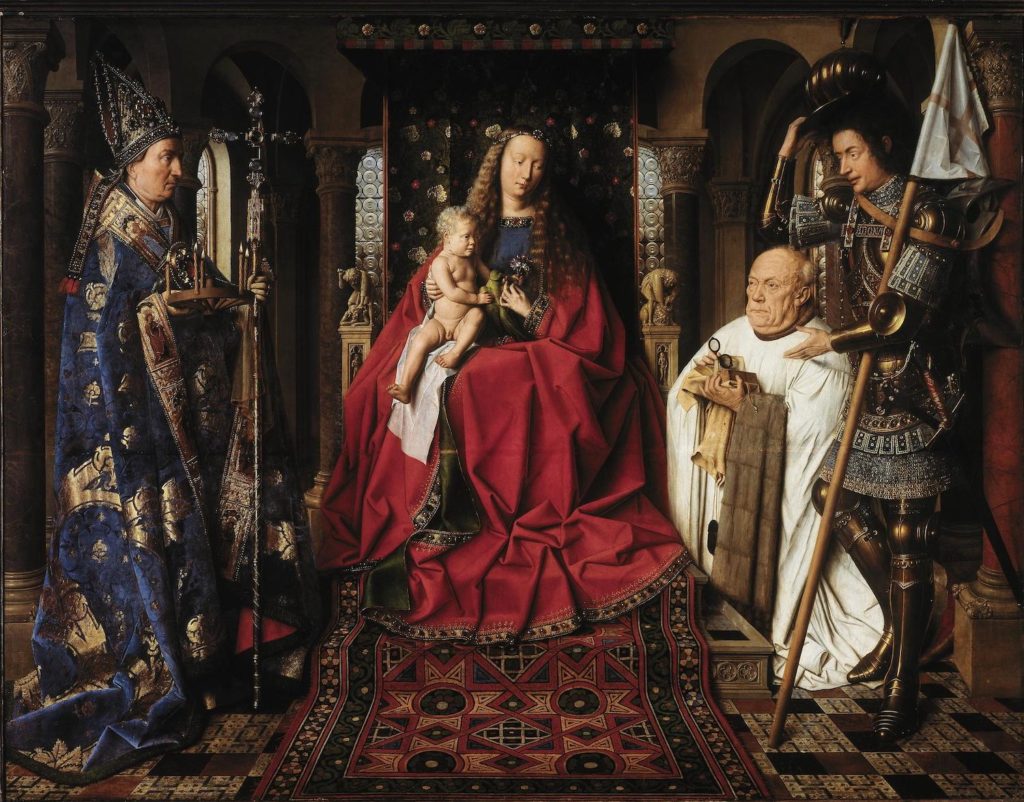
Giorgio Vasari, (the principal source of art history gossip from the 16th century) in his famous Lives of the Most Excellent Painters, Sculptors, and Architects claimed that van Eyck invented oil painting. Although it's probably not true, such a rumor must have had many sources. Van Eyck definitely contributed to a revolution in fine art, switching from egg paint (tempera) to much richer and deeper colors available in oil pigment.
2. He signed his paintings with a proper noun and a motto
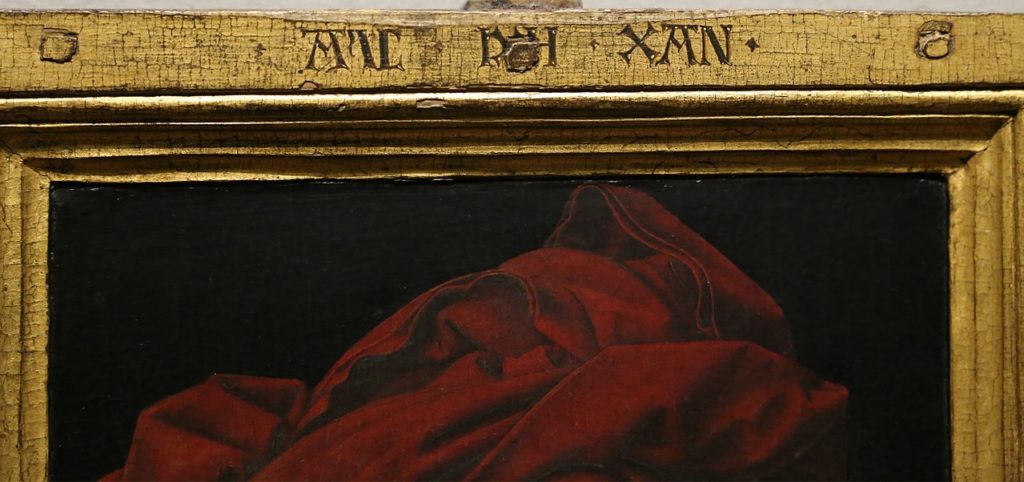
The later medieval artists remained anonymous, only in Northern Europe this changed in the early on 15th century - exactly when van Eyck lived. He was one of the first artists to sign his paintings with his name, "JOHANNES DE EYCK". On ten of these paintings it's followed by his personal motto,Als ich kan (Equally well as I tin) which is unremarkably written in Greek characters. It'southward believed that by this he was challenging other artists to do better than him.
3. There are just xx of his works remaining
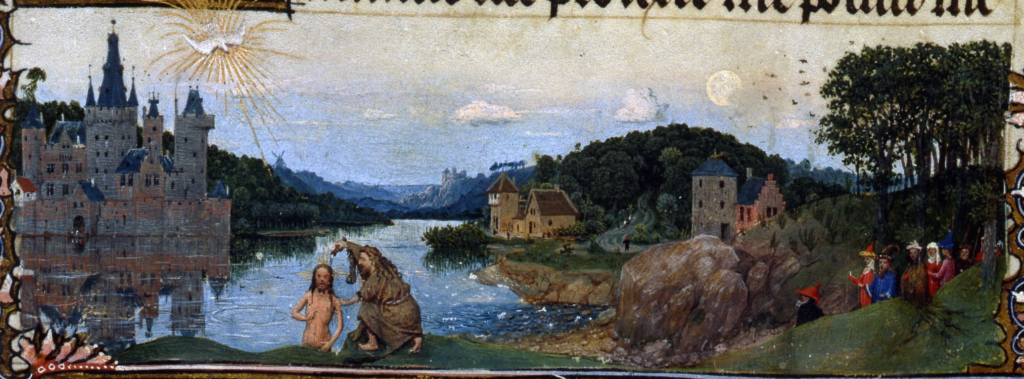
In that location are virtually 20 surviving paintings that are confidently attributed to van Eyck - from big ones like theGhent Altarpiece to the illuminated miniatures of the Turin-Milan Hours. All are dated between 1432 and 1439.
4. He was a principal of portraiture
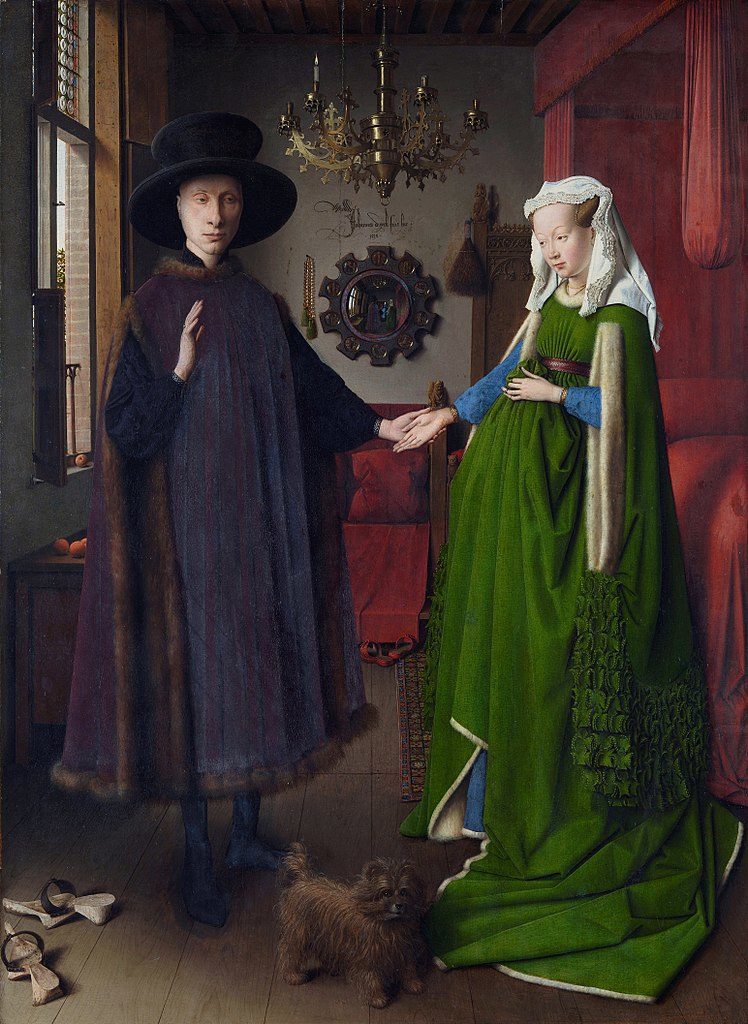
Actually he painted everything, both secular and religious subjects, including altarpieces, unmarried-console religious figures, and deputed portraits. His religious works are astonishing and his portraits are hitting. The demand for portraits was high at the fourth dimension because of the emerging merchant center-grade and a growing awareness of humanist ideas. Van Eyck's portraits are characterized by his manipulation of oil pigment and meticulous attention to detail, his bang-up powers of observation, and his trend to employ layers of thin translucent glazes to create intensity of color and tone. He pioneered portraiture during the 1430s. Also, from equally far away equally Italy, he was admired for the naturalness of his depictions. Just await at his famous Arnolfini portrait!
But please don't say that Giovanni di Nicolao Arnolfini looks like Vladimir Putin.
5. Nosotros may know his self-portrait
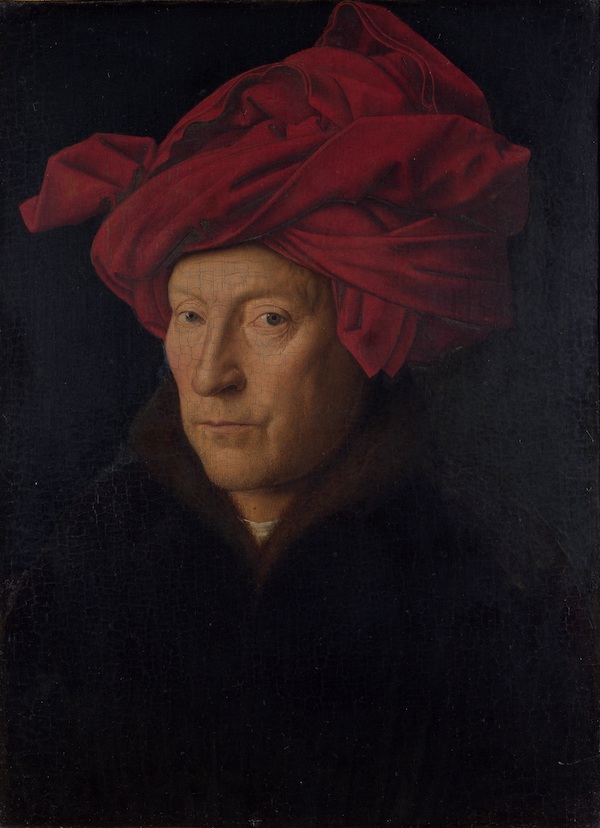
Portrait of a Human (Cocky Portrait?), also known as a Portrait of a Human in a Turban or Portrait of a Homo in a Red Turban, painted in oil in 1433. It has the Als Ich Kan autograph, only here it is unusually big and prominent, written on the frame. Consequently, this fact, along with the man's unusually straight and confrontational gaze, have been taken as an indication that the work is a self-portrait. But, every bit often in art history, we are non completely sure about this.
6. He worked in Bruges as a courtroom painter for Philip the Good of Burgundy
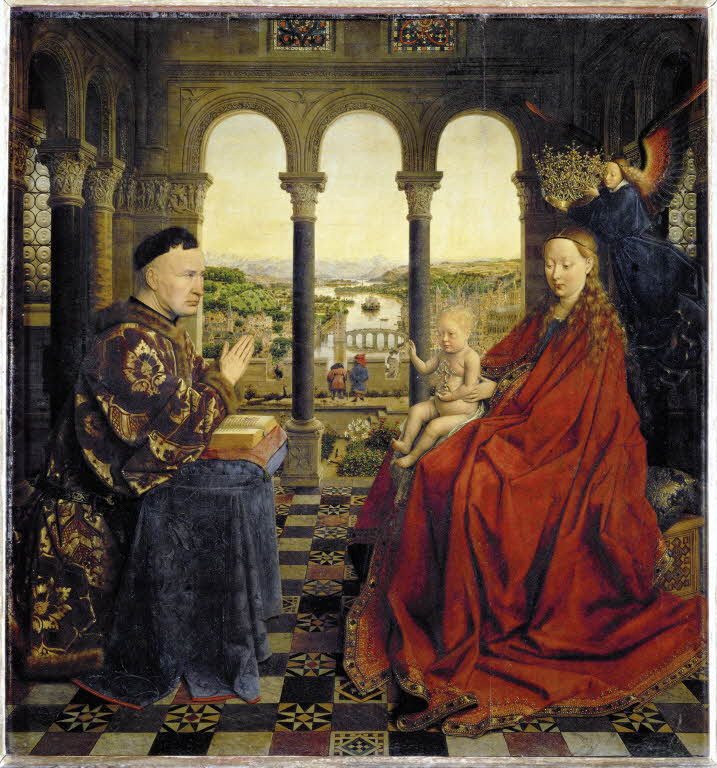
During the reign of Philip the Good, a minor Duchy of Burgundy reached the noon of its prosperity and prestige and became a leading middle of the arts. Jan Van Eyck was well paid by Philip. He sought for the painter to be financially secure and to accept the liberty to paint whenever he wanted. The creative person worked for the Knuckles every bit a courtroom painter and as well equally a diplomat. He was respected and cherished in this part. For example we know, that on 18 October 1427, during the Feast of St. Luke, Van Eyck traveled to Tournai to nourish a feast in his honor, too attended by Robert Campin and Rogier van der Weyden, two other stars of Early on Northern Renaissance art.
7. His works were known in the Italian Renaissance earth
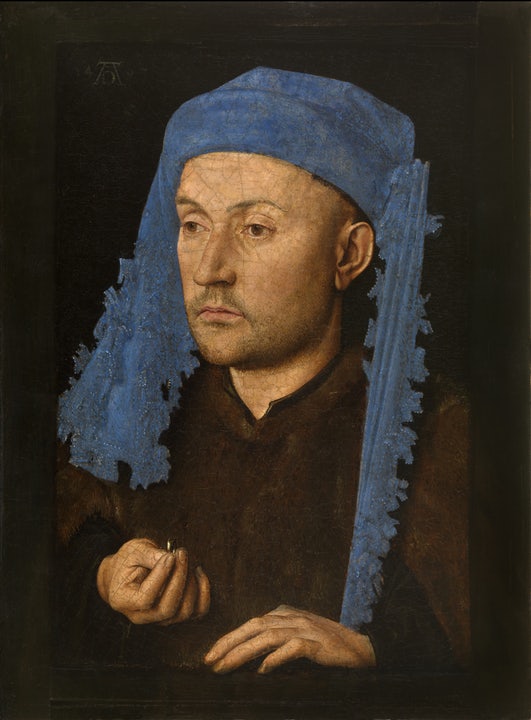
January Van Eyck'southward fine art was not irksome to arouse the admiration of the Italians, even so. During his lifetime he fifty-fifty had some Italians among his patrons. Shortly after his decease his paintings found an beholden public in Italy. Two Genoese merchants trading in Bruges, too equally 1 Lucchese, are known to take commissioned pictures from him. It was very likely through them that some other paintings by the great Flemish chief reached Italy.
8. His biggest masterpiece is in restoration now
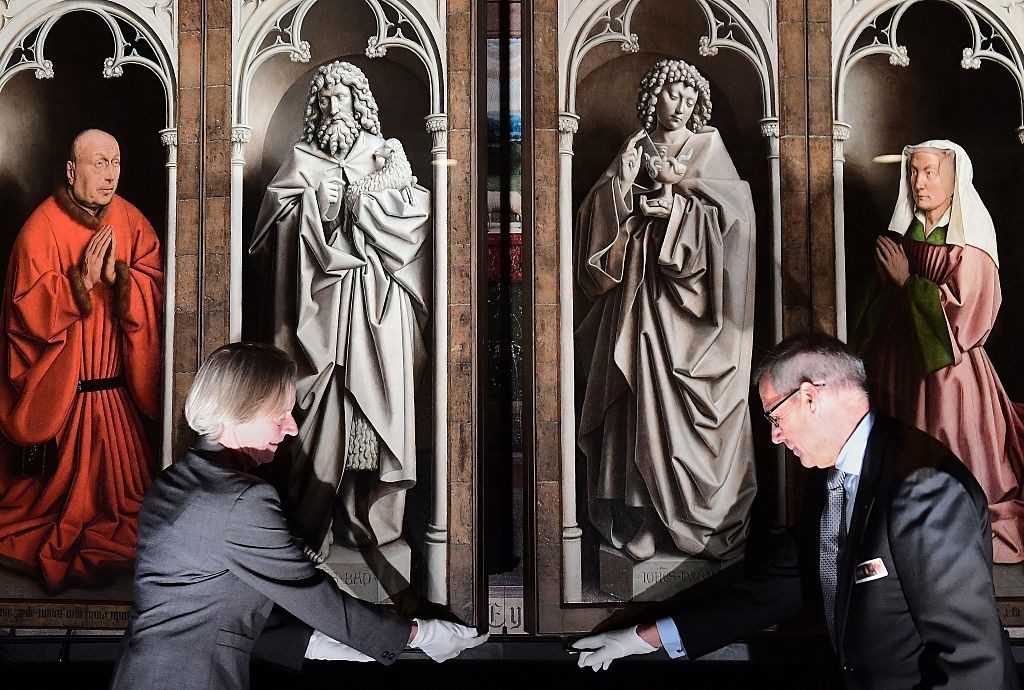
January van Eyck produced paintings for private clients in improver to his piece of work at the court. Foremost among these is theGhent Altarpiece. He painted information technology for the merchant, financier, and political leader Jodocus Vijdts and his wife Elisabeth Borluut. Jan'southward brother, Hubert van Eyck, collaborated on this work too. Generally, art historians believe Hubert began it in 1420 and Jan completed information technology in 1432. Some other blood brother, Lambert, is also mentioned in Burgundian court documents. He may have overseen his brother's workshop afterward Jan's expiry. Each of the altarpiece's 12 panels characteristic intricately rendered biblical figures (some of the earliest subjects painted with oils) frozen in iconic scenes from Christianity.
A few years ago, Kingdom of belgium's Royal Institute for Cultural Heritage invested $two.44 one thousand thousand into meticulously chipping away the artwork'due south top layer of oils. The first stage of the restoration finished in October 2016, when the outer panels were returned to St Bavo's Cathedral. At the same time the 2nd stage of the restoration began, that of the 5 lower panels of the opened altarpiece, including the cardinal panel featuring The Adoration of the Mystic Lamb. This part of the restoration has recently finished and the third phase volition go on in the hereafter.
Here you can heed to a lecture past the caput of the conservation of the altarpiece:
nine. He wasn't the best at painting sheep
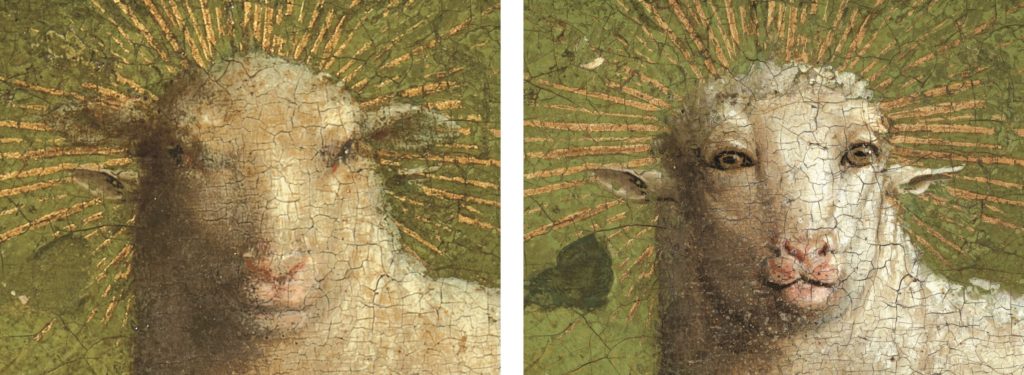
During the restoration of the Ghent Altarpiece the restorers removed the over-paint on the part of the central panel that features the sacrificial lamb. The whole art history world gasped because the original January Van Eyck's lamb is... Ugly. Weird. Agonizing. You lot proper noun it!
Equally you tin see, the original lamb (the one on the correct) has a much more human being-like face. Art historians of the Royal Institute's restoration project claim that information technology was over-painted in the 16th-century to "neutralize" the expression. This was to make information technology less disturbing, and to adapt it the the sense of taste of the time of the over-painting.
I don't know, but peradventure even a chief like Van Eyck didn't accept to be the best at everything?
x. 2020 volition be his year
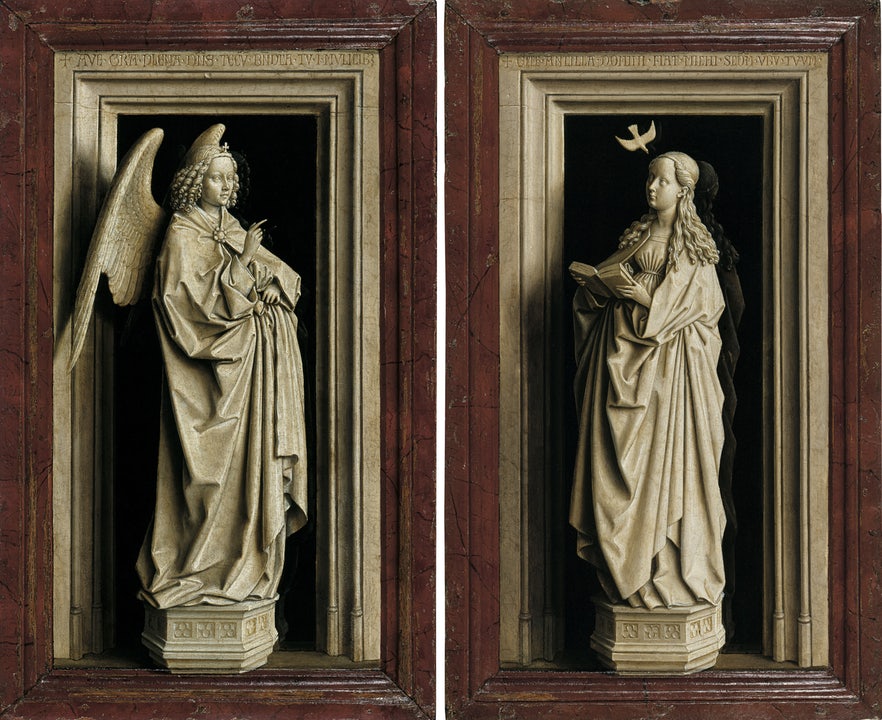
From February 1st to Apr 30th, 2020 at the Museum of Fine Arts (MSK) in Ghent at that place volition exist an exhibition, 'Van Eyck. An Optical Revolution', presenting over half of the twenty works of van Eyck preserved now. The centerpieces of the exhibition will, of course, be the outer panels of The Adoration of the Mystic Lamb. To contextualize the optical revolution he inspired, Van Eyck'south paintings will exist shown alongside works by his most talented peers from Germany, French republic, Italian republic and Spain. 'Van Eyck. An Optical Revolution' will exist 1 of the must-meet exhibitions of 2020. We at DailyArt Magazine won't miss it; exist prepared for more articles well-nigh it presently!
Source: https://www.dailyartmagazine.com/10-things-you-need-to-know-about-jan-van-eyck/
0 Response to "Jan Van Eyck About the Art That He Did"
Post a Comment